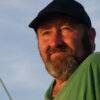Listeners:
Top listeners:
00:00
00:00
volume_up
chevron_left
-
 play_arrow
play_arrow
Radio Today Radio Today
-
 play_arrow
play_arrow
Rocking Today Rocking Today on Radio Today
-
play_arrow
Rebel Rock Radio Hard Rock on Radio Today
-
 play_arrow
play_arrow
Early Morning News Mike Stroud
-
 play_arrow
play_arrow
Early Morning News Mike Stroud

share
close
A very common widespread intra- Africa migrant visiting South Africa from October to April . They like woodland , savanna, riverine bush, gardens , parks, exotic plantations and semi arid scrub .
Seen solitary or in pairs they are neither shy nor secretive like most other cuckoos. Males swoop in a wide arc over their territory with their heads and tails raised . Adjacent territorial males may chase each other for up to 400m . Their flight is direct with quick wingbeats .
Food is mainly caterpillars and also other insects.
You may hear them calling around our region with a persistent plaintive musical ” dee – dee – deederick ” rising then falling in pitch . The fledglings call ” chee chee “all day long.
Breeding is from October to March . The male feeds caterpillars to the female in courtship. 24 species of birds such as sparrow , weaver , wagtail nests are used to host their eggs. One blue , pale green , white or creamy egg is laid in the host’s nest. The female then removes and eats one of the hosts own eggs so that numbers tally. Incubation lasts 10 – 12 days followed by a nestling period of 20 – 21 days . The young then evict eggs or the young of the host within 4 days of hatching.
The isiZulu name is uNononekhanda and in Afrikaans die Diederikkie.




Written by: mike
Rate it
Similar posts
Recent Comments
No comments to show.Featured post

Latest posts
Current show
Upcoming shows

Breakfast with Errol Ballantine
8:00 am - 10:00 am

Pages Unbound with Glenda Slade
10:00 am - 10:30 am

Living Our Best Years
10:30 am - 12:00 pm

BBC World Midday News
12:00 pm - 1:00 pm

After Lunch with Radio Today
1:00 pm - 3:00 pm
Chart













